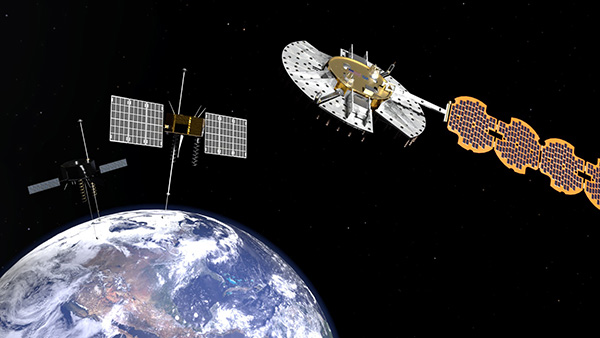U.S. Air Force to put NTS-3 into geostationary orbit
The Air Force seems to be on track to experiment with positioning, navigation and timing (PNT) satellites in geostationary orbit.
The idea for Navigation Technology Satellite 3 (NTS-3) has been around for a while, and notionally scheduled for launch in 2023.
Recently, the Air Force announced it will engage in the Vanguard science and technology program to quickly bring capabilities to the service. It is unclear whether or not this will ensure the 2023 launch takes place, or if the program will be accelerated for an earlier launch.
NTS-3 will include:
- Experimental antennas
- Flexible and secure signals
- Increased automation
- Use of commercial assets
- A new digital signal generator that can be reprogrammed on-orbit, enabling it to broadcast new signals
- Digital signatures for detecting spoofing attacks
- Steerable regional beams in multiple frequencies and signal codes
- “Bounce-Back” capabilities for recovery from attack, solar and other disruptions
The NTS-3 marks the first time in 40 years the service has launched such a pioneering effort, following GPS.
The Department of Defense PNT Strategy calls for future military efforts and the results to be classified, making it unlikely that NTS-3 experiments will benefit the majority of PNT users in the civil sector.

















Follow Us